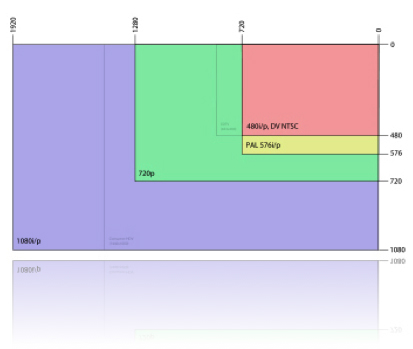High-Definition vs. Standard-Definition Video, Aspect Ratio, and Frame Rate

Just about everyone knows that HD stands for “high-definition,” but why do all those numbers matter to you? Three words: quality, quality, and quality. A Full HD image is just so much clearer, and because of its large size, all the small details can be seen much easier and clearer. Also, when viewing HD video on a large TV or monitor, the video is usually shrunken to fit the screen, which means there is no loss of image quality. In contrast, an SD video would have to be stretched to fit a large screen, thus decreasing its viewing quality and making the image look pixelated, or unsmooth.
Two other things to consider are aspect ratios and frame rates. Aspect ratio refers to the shape of the image (the ratio of its horizontal length to its vertical height). The two common aspect ratios are 4:3 (4×3 or standard) and 16:9 (16×9 or wide-screen). The 4:3 ratio is definitely going by the wayside, as it is pretty rare for video to be shot in 4:3, in addition to TVs like your old square-ish tube TV being nearly extinct. The most practical reason for the 16:9 ratio is that is much closer to the shape of what we see with our eyes; the image is much wider than it is tall (78% wider, as opposed to just 33% with the 4:3 ratio). Click here to read more in-depth about aspect ratios and see some comparison images.
Frame rate in video refers to the number of frames shown per second (fps). As you probably know, video (based off the concept of film and film projection, of course) is made up of still images that are shown quickly enough to “trick” the brain into seeing continuous motion. We like to use the cinematic-looking 24fps, which is the typical frame rate for movies. If placed side-by-side, just about anyone would notice the difference between footage at 24fps (movies) and 30fps (typical television/video frame rate). The 30fps tends to have a more “realistic” feel, but the 24fps definitely has an artistic and engaging quality that is very hard to replicate or to fake by using effects.
The combination of using the highest quality and most aesthetically pleasing specifications will make all the difference in creating a professional, engaging and impactful video.
